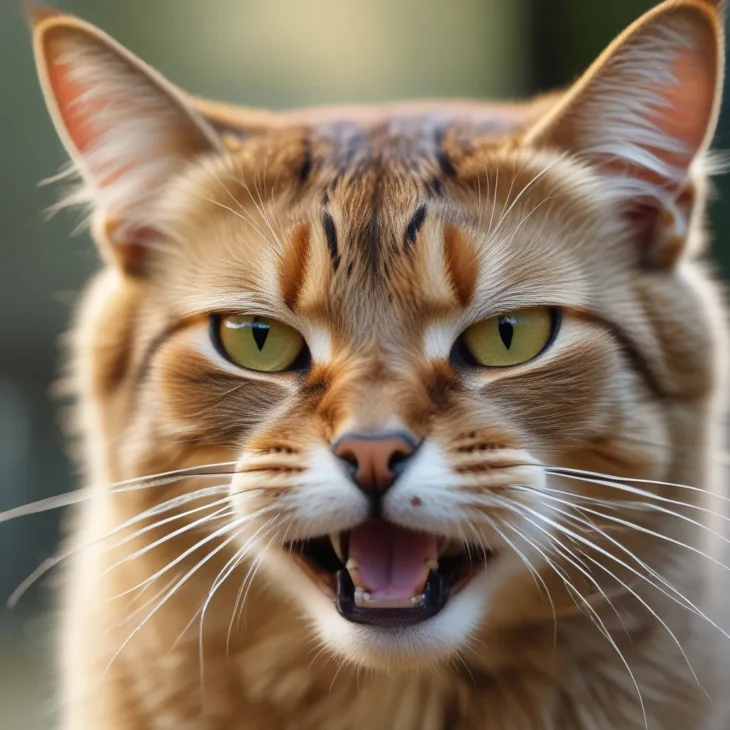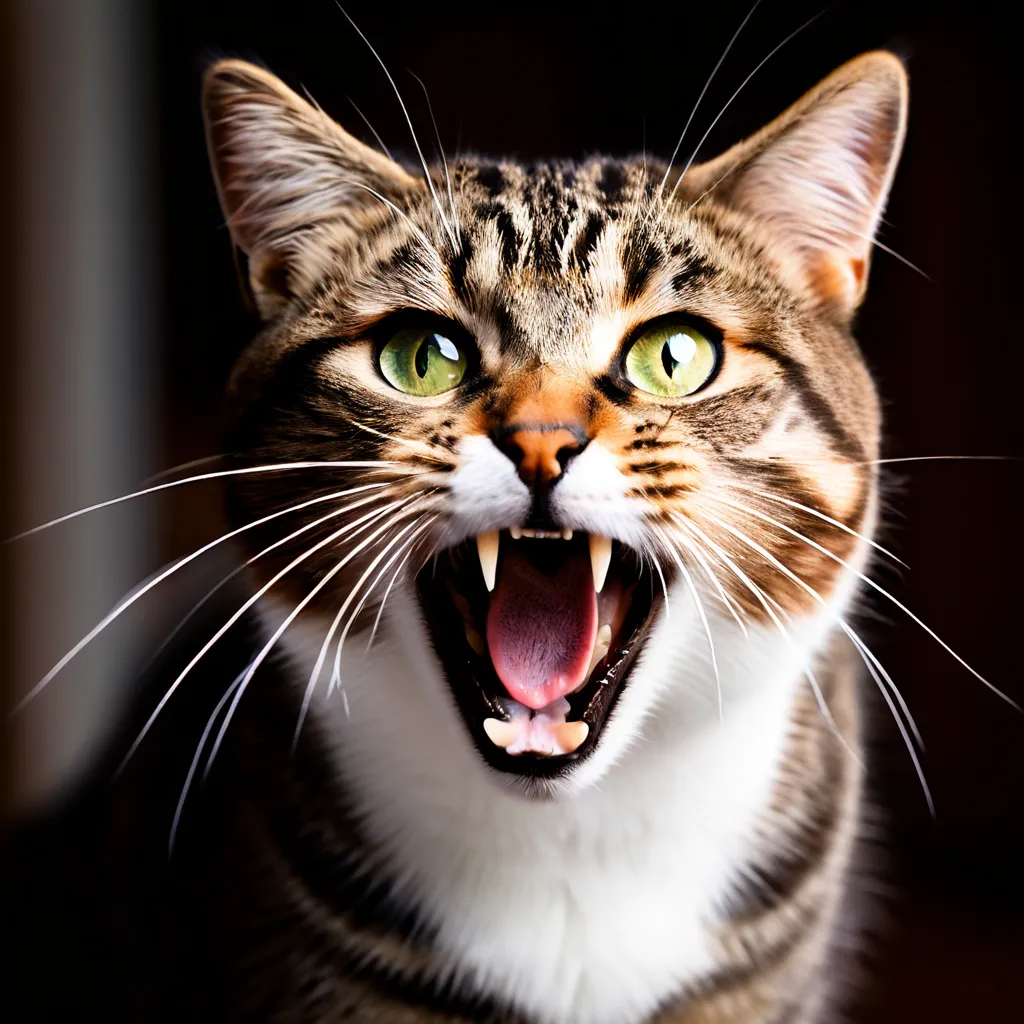Introduction
Are you tired of dealing with dominant cat behavior? Do you want to learn how to stop your cat from exhibiting aggressive or territorial behavior? You’re not alone. Many cat owners struggle with dominant cat behavior, which can manifest in a variety of ways, including hissing, growling, swatting, and even biting.
Dominant cat behavior can be caused by a range of factors, including genetics, environment, and socialization. In some cases, dominant behavior can be a sign of underlying anxiety or stress. Understanding the underlying causes of dominant behavior is key to addressing the issue effectively.
In this article, we’ll explore the ins and outs of dominant cat behavior, including what it is, how it manifests, and why cats exhibit it. We’ll also provide you with practical tips and strategies for modifying or stopping dominant behavior in your cat. Whether you’re a seasoned cat owner or a newcomer to the world of feline companionship, this article will provide you with the knowledge and tools you need to create a more harmonious and peaceful home for both you and your cat.
 By the end of this article, you’ll have a deeper understanding of dominant cat behavior and how to address it. You’ll learn how to identify the signs of dominant behavior, how to prevent it from developing in the first place, and how to modify or stop it if it’s already a problem. You’ll also learn about the role of owners and caregivers in addressing dominant cat behavior and the consequences of not stopping it.
By the end of this article, you’ll have a deeper understanding of dominant cat behavior and how to address it. You’ll learn how to identify the signs of dominant behavior, how to prevent it from developing in the first place, and how to modify or stop it if it’s already a problem. You’ll also learn about the role of owners and caregivers in addressing dominant cat behavior and the consequences of not stopping it.
So, if you’re ready to learn how to stop dominant cat behavior and create a more peaceful and harmonious home for your feline friend, keep reading!
What is Dominant Cat Behavior and How Does it Manifest?
Dominant cat behavior refers to a set of actions and attitudes exhibited by cats that assert their supremacy over other cats, animals, or even humans within their social hierarchy. This behavior is often driven by a cat’s natural instinct to establish a pecking order and maintain control over resources, territory, and attention. When cats exhibit dominant behavior, they are signaling their strength, power, and authority, which can manifest in various ways.
Physical Manifestations of Dominant Cat Behavior
Dominant cats often display specific body language and physical behaviors that reinforce their dominant status. These may include:
- Posturing: Standing tall, with ears up and tail held high, to appear larger and more intimidating.
- Territorial marking: Spraying or scratching surfaces to leave their scent behind and claim ownership.
- Resource guarding: Protecting food, water, litter boxes, or other essential resources from others.
- Agonistic behavior: Growling, hissing, or swatting at others to defend their dominance.
- Mounting or pawing: Displaying dominance by mounting or pawing at other cats or animals.
Behavioral Manifestations of Dominant Cat Behavior
In addition to physical displays, dominant cats may also exhibit specific behavioral traits, including:
- Assertive vocalization: Loud meowing or demanding attention to get what they want.
- Initiating interactions: Starting play or asserting their presence to get attention from others.
- Controlling access: Blocking or limiting access to certain areas or resources.
- Displacing others: Forcing other cats or animals to move or yield to their presence.
- Boundary testing: Pushing limits and testing rules to assert their dominance.
Why is it Essential to Recognize Dominant Cat Behavior?
Understanding dominant cat behavior is crucial for maintaining a harmonious and safe living environment. By recognizing the signs of dominance, you can take steps to address and manage this behavior, preventing it from escalating into aggression or other undesirable traits. In the next section, we’ll explore the underlying causes of dominant cat behavior and why cats exhibit this behavior in the first place.
Why Do Cats Exhibit Dominant Behavior and What Are the Underlying Causes?
Cats exhibit dominant behavior for a variety of reasons, including asserting their dominance over other cats, establishing a hierarchy, and protecting their territory. This behavior can manifest in different ways, such as hissing, growling, swatting, and even biting.
One of the main underlying causes of dominant behavior in cats is their natural instinct to survive and thrive in their environment. In the wild, cats need to compete for resources such as food, water, and shelter, and dominant behavior helps them to establish their position in the hierarchy.
Another reason for dominant behavior in cats is their social structure. Cats are naturally solitary animals, but they can also form close bonds with other cats, especially if they are related. Dominant behavior can help to establish a hierarchy within a group of cats, with the dominant cat leading the way and the subordinate cats following.
In addition to these natural instincts, dominant behavior in cats can also be influenced by their environment and upbringing. For example, if a cat is not socialized properly or is subjected to stress or abuse, it may develop dominant behavior as a way of coping.
It’s also worth noting that dominant behavior in cats can be influenced by their breed and genetics. Some breeds, such as Siamese and Abyssinian, are known to be more dominant and assertive than others.
Overall, dominant behavior in cats is a complex phenomenon that can be influenced by a variety of factors, including their natural instincts, social structure, environment, and genetics.
Identifying Dominant Behavior in Your Cat
Identifying dominant behavior in your cat is crucial to understanding their social dynamics and hierarchy within a multi-cat household. Dominant behavior can manifest in various ways, and recognizing these signs is essential for fostering a balanced and respectful feline-human dynamic.
Some common signs of dominant behavior in cats include:
- Claiming the best napping spots: Dominant cats often claim the most desirable napping spots, such as sunny windowsills, the top of the cat tree, or cozy spots on the bed.
- Physical cues: Dominant cats may display confident physical cues, such as standing tall, arching their back, or puffing out their fur.
- Territorial marking: Dominant cats may mark their territory by scratching, spraying, or leaving their scent on surfaces.
- Resource guarding: Dominant cats may guard food, water, or other resources, preventing other cats from accessing them.
- Agonistic behavior: Dominant cats may exhibit agonistic behavior, such as hissing, growling, or swatting, to assert their dominance.
It’s essential to recognize and respect these territorial instincts to understand and address dominant cat behavior. By understanding these behaviors, you can take proactive measures to manage dominance issues and ensure a harmonious multi-cat household. Remember, dominant behavior is a natural aspect of feline social dynamics. By employing patience, empathy, and the right strategies, you can manage dominance issues effectively and improve the relationship between your cats and their human companions.
Effective Ways to Modify or Stop Dominant Behavior in Cats
Dominant behavior in cats can be challenging to address, but with the right approach, it is possible to modify or stop this behavior. Here are some effective ways to do so:
- Understand the Causes of Dominance: Recognizing the reasons behind your cat’s dominant behavior is the first step in addressing it. Territorial instincts, lack of socialization, and medical issues are common underlying causes.
- Neutering or Spaying: Spaying or neutering can significantly reduce dominant behavior in cats, especially if done before the cat reaches maturity.
- Positive Reinforcement Training: Reward your cat for calm, submissive behavior. Use treats, praise, and affection to reinforce desired behavior.
- Redirect Aggressive Behavior: Redirect your cat’s aggressive behavior into a more acceptable outlet, such as a toy or scratching post.
- Desensitize and Countercondition: Gradually expose your cat to situations or stimuli that trigger dominant behavior, while providing a positive association.
- Environmental Enrichment: Provide a stimulating environment that meets your cat’s physical and emotional needs.
- Set Boundaries and Establish a Hierarchy: Establish clear rules and boundaries, and consistently enforce them.
- Manage Resources: Ensure that your cat has access to food, water, litter, and attention without having to compete for these resources.
- Provide Alone Time: Respect your cat’s need for alone time and provide a quiet, safe space for them to retreat to when needed.
- Seek Professional Help: If your cat’s dominant behavior persists or worsens, consult with a professional animal behaviorist or a veterinarian for guidance and support.
By following these steps and being patient, consistent, and gentle, you can help your cat become a more confident, calm, and well-adjusted companion.
Preventing Dominant Behavior from Developing in the First Place
Preventing dominant behavior in cats requires a combination of proper socialization, training, and management. Here are some tips to help prevent dominant behavior from developing in the first place:
1. Spay or Neuter Your Cat
Spaying or neutering your cat can help reduce dominant behavior, especially in males. This is because the surgery reduces the levels of testosterone, a hormone that contributes to aggression and dominance.
2. Socialize Your Cat Properly
Socialization is critical in shaping your cat’s behavior. Expose your cat to various environments, people, and other animals to help them develop good social skills. This can help reduce fear and aggression, which can contribute to dominant behavior.
3. Provide a Stable Environment
Cats thrive in stable environments. Provide a consistent routine, a comfortable living space, and plenty of attention and affection. This can help reduce stress and anxiety, which can contribute to dominant behavior.
4. Train Your Cat
Training your cat can help establish a clear hierarchy and reduce dominant behavior. Use positive reinforcement techniques, such as clicker training, to teach your cat basic obedience commands.
5. Manage Resources
Make sure your cat has access to plenty of resources, such as food, water, and litter boxes. Managing resources can help reduce competition and tension, which can contribute to dominant behavior.
6. Provide Enough Attention and Affection
Cats need attention and affection to feel secure and loved. Provide plenty of attention and affection to your cat, but avoid overindulging them. This can help reduce dominant behavior and prevent them from becoming too demanding.
7. Avoid Punishing Your Cat
Punishing your cat can create fear and anxiety, which can contribute to dominant behavior. Instead, use positive reinforcement techniques to encourage good behavior.
8. Provide Enough Exercise and Stimulation
Cats need plenty of exercise and stimulation to stay happy and healthy. Provide plenty of toys, scratching posts, and climbing structures to keep your cat entertained and engaged.
By following these tips, you can help prevent dominant behavior from developing in your cat. Remember, every cat is different, so it’s essential to tailor your approach to your cat’s unique needs and personality.
The Role of Owners/Caregivers in Addressing Dominant Cat Behavior
As a cat owner or caregiver, it’s essential to understand the role you play in addressing dominant cat behavior. Dominant behavior in cats can manifest in various ways, such as aggression, territorial marking, or bullying other pets in the household. While it’s natural for cats to exhibit some level of dominance, excessive or persistent dominant behavior can be problematic and requires attention from owners.
Setting Boundaries and Establishing Leadership
To address dominant cat behavior, owners must establish themselves as leaders and set clear boundaries. This can be achieved by:
- Providing a stable and predictable environment
- Establishing a routine for feeding, playtime, and sleep
- Setting clear rules and consequences for undesirable behavior
- Encouraging positive behavior through rewards and praise
Avoiding Reinforcement of Dominant Behavior
Owners should avoid reinforcing dominant behavior by:
- Not giving in to demands for food or attention
- Not allowing the cat to dictate the terms of interaction
- Not punishing or physically disciplining the cat, as this can exacerbate dominant behavior
Providing Adequate Resources and Space
Ensuring that your cat has access to adequate resources, such as food, water, litter, and scratching posts, can help reduce dominant behavior. Additionally, providing a safe and comfortable space for your cat to retreat to when feeling overwhelmed or stressed can help alleviate dominant behavior.
Seeking Professional Help
If your cat’s dominant behavior persists or worsens, it’s essential to seek professional help from a certified animal behaviorist or a veterinarian. They can help you identify underlying causes of the behavior and develop a customized plan to address it.
Addressing dominant cat behavior requires a comprehensive approach that involves setting boundaries, avoiding reinforcement of dominant behavior, providing adequate resources and space, and seeking professional help when needed. By taking these steps, owners can help reduce dominant behavior and create a more harmonious and balanced relationship with their feline companions.
Consequences of Not Stopping Dominant Cat Behavior
If you don’t address dominant cat behavior, it can lead to several negative consequences for both your cat and other pets in the household. Here are some of the potential outcomes of not stopping dominant cat behavior:
Aggression Towards Humans
Dominant cats may become aggressive towards humans, especially if they feel threatened or challenged. This can lead to scratching, biting, or even attacking family members.
Injury to Other Pets
Unchecked dominant behavior can result in injury to other pets in the household. Your cat may bully, chase, or even attack other pets, leading to stress, fear, and physical harm.
Stress and Anxiety
Dominant behavior can create a stressful environment for both your cat and other pets. This can lead to anxiety, fear, and depression, which can further exacerbate behavioral problems.
Escalation of Behavior
If dominant behavior is not addressed, it can escalate into more severe behaviors, such as territorial marking, spraying, or even aggression towards other animals outside the household.
Damage to Property
Untamed dominant behavior can lead to destruction of property, such as furniture, carpets, and other household items, as your cat may exhibit destructive behavior to assert its dominance.
Health Problems
Chronic stress and anxiety caused by dominant behavior can lead to health problems in your cat, such as digestive issues, skin problems, and a weakened immune system.
It’s essential to recognize the signs of dominant behavior and take steps to address it to prevent these negative consequences. By modifying your cat’s behavior and providing a safe and stress-free environment, you can ensure a happy and healthy life for your feline friend.
Conclusion
In conclusion, it is essential for cat owners to understand and address dominant behavior in their cats effectively. By identifying such behaviors, practicing preventative measures, and applying various techniques for modifying or stopping such behavior, pet owners can promote a more harmonious environment for their feline companions. Additionally, recognizing the critical role of owners and caregivers in managing this issue is crucial in promoting the well-being of cats.

















